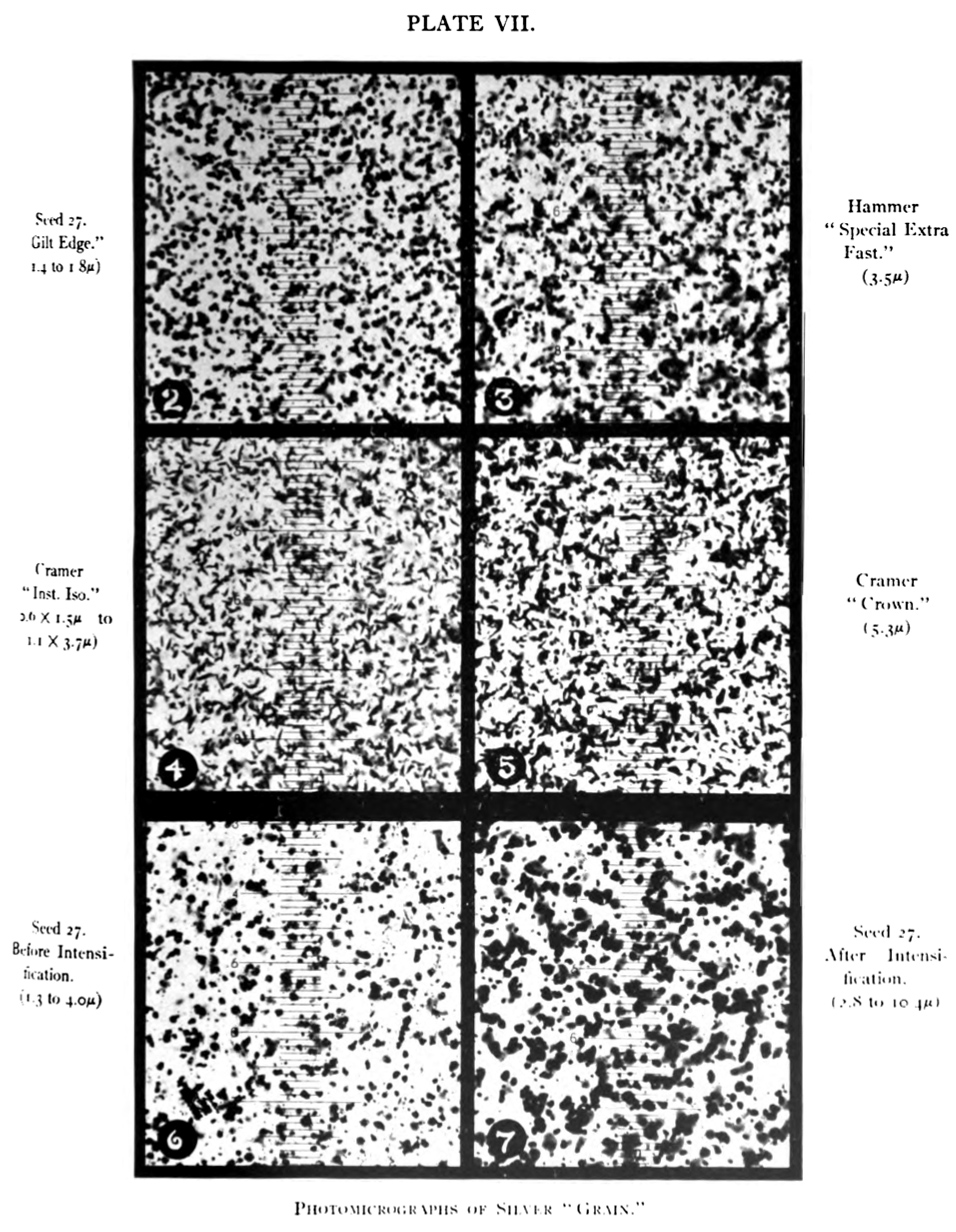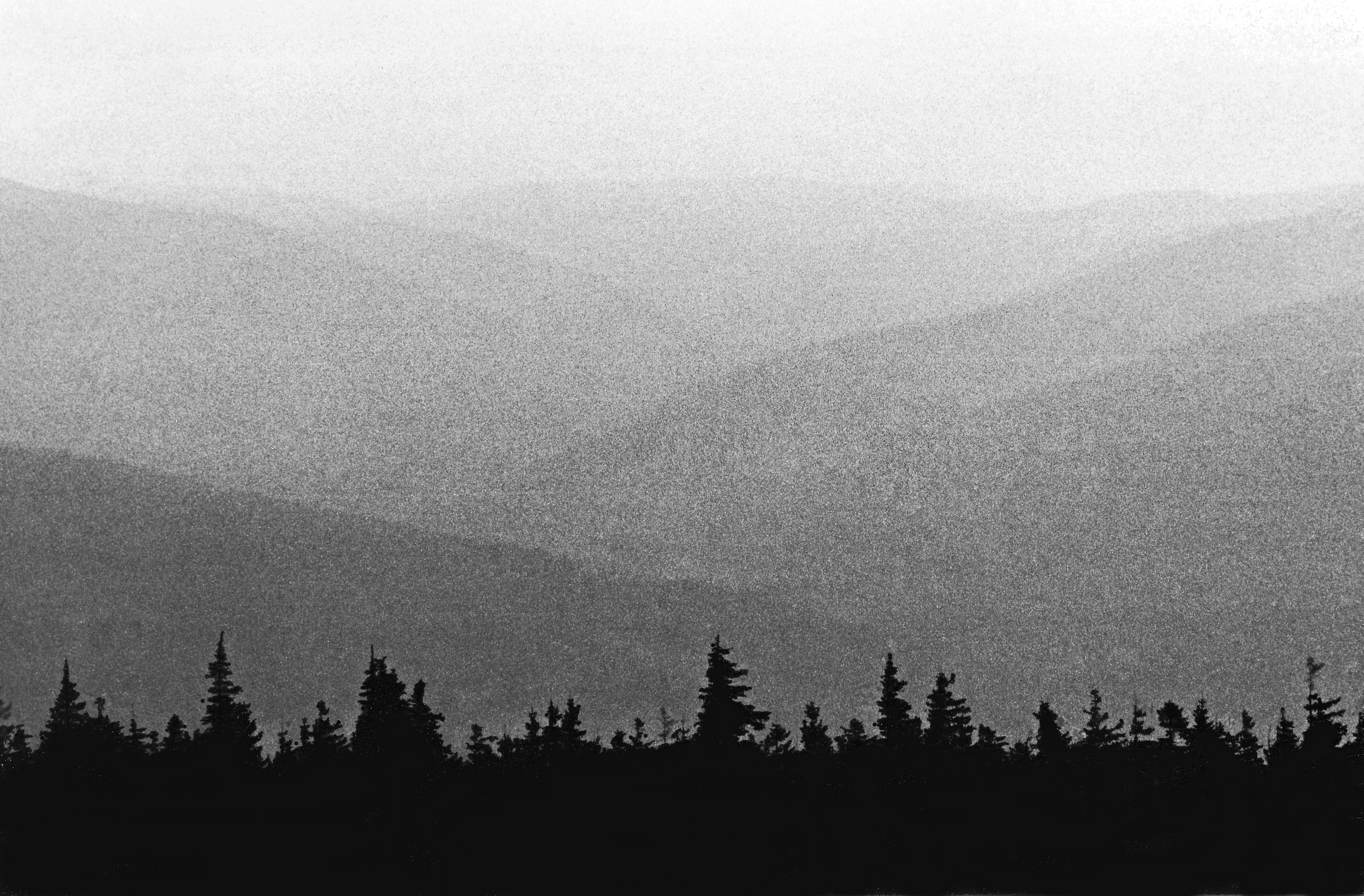Film Grain on:
[Wikipedia]
[Google]
[Amazon]

 Film grain or film granularity is the random optical texture of processed
Film grain or film granularity is the random optical texture of processed
Image:MartinIversenNorway1991.jpg,
Digital photography does not exhibit film grain, since there is no film for any grain to exist within. In digital cameras, the closest physical equivalents of film grains are the individual elements of the
Film Grain discussed at FLIP Animation blog
Retrieved March 2013 Science of photography

 Film grain or film granularity is the random optical texture of processed
Film grain or film granularity is the random optical texture of processed photographic film
Photographic film is a strip or sheet of transparent film base coated on one side with a gelatin photographic emulsion, emulsion containing microscopically small light-sensitive silver halide crystals. The sizes and other characteristics of the ...
. Film grain develops due to the presence of small particles of a metallic silver, or dye clouds, developed from silver halide
A silver halide (or silver salt) is one of the chemical compounds that can form between the Chemical element, element silver (Ag) and one of the halogens. In particular, bromine (Br), chlorine (Cl), iodine (I) and fluorine (F) may each combine wit ...
that have received enough photons. While film grain is a function of such particles (or dye clouds) it is not a particle but an optical effect. The magnitude of the effect (also known as amount of grain) depends on both the film stock and the definition at which it is observed. It can be objectionably noticeable in an over-enlarged film photograph.
Chemical background
The size and morphology of the silver halide grains play crucial role in the image characteristics and exposure behavior. There is a tradeoff between the crystal size and light sensitivity (film speed
Film speed is the measure of a photographic film's sensitivity to light, determined by sensitometry and measured on various numerical scales, the most recent being the ISO system introduced in 1974. A closely related system, also known as IS ...
); larger crystals have better chance to receive enough energy to flip them into developable state, as they have higher probability of receiving several photons needed for forming the Ag4 clusters that start the autocatalytic process of development. Large crystals will therefore give more sensitive film, for the price of being visibly grainier. Fine grain better preserves details but requires more light.
Tabular-grain film uses crystals of flat morphology, with width-to-thickness ratios of at least two, often much more. The flat morphology allows better overlapping of the crystals, reducing intergranular space and giving more black for the same amount of silver. The more compact structure allows for thinner emulsion layers. It is also more difficult to wash during the fixing stage. Tabular crystals also better absorb sensitizing dyes. They also scatter the light less, giving sharper image but less gradation. Tabular crystals also have less chance of absorbing high energy photons from ambient and cosmic radiation, giving longer shelf life without fogging. The tabular crystals can be favored during synthesis by an extra step, where the formed crystal seeds of undesired morphology are dissolved and the remaining ones grow by controlled Ostwald ripening
Ostwald ripening is a phenomenon observed in solid solutions and liquid sols that involves the change of an inhomogeneous structure over time, in that small crystals or sol particles first dissolve and then redeposit onto larger crystals or s ...
.
"Classical", cubic-grain emulsion provides more random distribution of the crystal shapes and sizes, resulting in more "forgiving" film tolerant to wider range of exposures.
Both morphologies can also be modified for a core-shell structure, with a small silver halide grain being surrounded by one or more light-capturing layers, or a more light-sensitive center is surrounded by more developer-sensitive shell. This gives finer grain for the same film speed. One of possibilities is an iodide-rich core and iodide-poor shell, giving high sensitivity to light inside and high sensitivity to developer outside.
Both morphologies can also come in different distribution of sizes; "monosize", with narrow distribution of crystal dimensions, gives better control of the film speed and less visible grain (due to absence of larger crystals). Wider, more random size variation gives more tolerance to exposure (for too little light there are some big crystals, for too much light there are some little grains), and more tolerance to development process.
Rod-shaped grains, the opposite to tabular grains, can undergo self-development even in absence of light, resulting in fogging.
Measures
RMS granularity
Granularity, or RMS granularity, is a numerical quantification of density non-uniformity, equal to theroot-mean-square
In mathematics, the root mean square (abbrev. RMS, or rms) of a set of values is the square root of the set's mean square.
Given a set x_i, its RMS is denoted as either x_\mathrm or \mathrm_x. The RMS is also known as the quadratic mean (denoted ...
(rms) fluctuations in optical density, measured with a microdensitometer
A microdensitometer is an optical instrument used to measure optical density, optical densities in the microscopic domain.Christopher Dainty, J. C. Dainty and R. Shaw, ''Image Science'' (Academic, New york, 1974).T. H. James, ''The Theory of the P ...
with a 0.048 mm (48-micrometre) diameter circular aperture, on a film area that has been exposed and normally developed to a mean density of 1.0 D (that is, it transmits 10% of light incident on it).
Granularity is sometimes quoted as "diffuse RMS granularity times 1000", so that a film with granularity 10 means an rms density fluctuation of 0.010 in the standard aperture area.
When the particles of silver are small, the standard aperture area measures an average of many particles, so the granularity is small. When the particles are large, fewer are averaged in the standard area, so there is a larger random fluctuation, and a higher granularity number.
Selwyn granularity
Film grain is also sometimes quantified in a way that is relative independent of size of the aperture through which the microdensitometer measures it, using R. Selwyn's observation (known as Selwyn's law) that, for a not too small aperture, the product of RMS granularity and the square root of aperture area tends to be independent of the aperture size. The Selwyn granularity is defined as: where σ is the RMS granularity and ''a'' is the aperture area.Grain effect with film and digital
The images below show an example of extreme film grain:Rallycross
Rallycross is a form of sprint style motorsport held on a mixed-surface circuit (racing), racing circuit using modified production touring automobile, cars or prototype racing cars. It began in the 1960s as a cross between rallying and autocross ...
car pictured on Agfa 1000 RS slide
Image:MartinIversenNorway1991Grain.jpg, Detail of the same photo to show the grain better
Image:Amsterdam, Red Ligth District, Graffiti 1996.jpg, Recording Kodak Film 1000 ASA, Amsterdam, Graffiti 1996
image sensor An image sensor or imager is a sensor that detects and conveys information used to form an image. It does so by converting the variable attenuation of light waves (as they refraction, pass through or reflection (physics), reflect off objects) into s ...
(e.g. CCD cell), the pixels; just as small-grain film has better resolution but less sensitivity than large-grain film, so will an image sensor with more elements result in an image with better resolution but less light per pixel. Thus, like film grain, physical pixel size represents the compromise between resolution and sensitivity. However, while film grains are randomly distributed and have size variation, image sensor cells are of same size and are arranged in a grid, so direct comparison of film and digital resolutions is not straightforward. Instead, the ISO setting on a digital camera controls the gain of the electronic amplifier on the readout circuitry of the chip. Ultimately, high ISO settings on a digital camera operating in low light conditions does result in a noisy image, but the visual appearance is somewhat different from traditional photographic film.
The visual and artistic effect of film grain can be simulated in some digital photo manipulation programs by adding grain to a digital image after it is taken. Various raw image processing software packages (such as RawTherapee and DxO PhotoLab) feature "film simulation" effects that apply the characteristics of various film brands, including the graininess. Plugins for the same purpose also exist for various image editors such as Photoshop
Adobe Photoshop is a raster graphics editor developed and published by Adobe for Windows and macOS. It was created in 1987 by Thomas and John Knoll. It is the most used tool for professional digital art, especially in raster graphics editin ...
(e.g. in Nik Collection's Analog Efex and Silver Efex).
In digital photography, image noise
Image noise is random variation of brightness or color information in images. It can originate in film grain and in the unavoidable shot noise of an ideal photon detector. In digital photography is usually an aspect of electronic noise, produ ...
sometimes appears as a "grain-like" effect.
Film grain overlay
Film grain overlay, sometimes referred to as "FGO", is a process in which film emulsion characteristics are overlaid using different levels of opacity onto a digital file. This process adds film grain characteristics, and in instances with moving images, subtle flicker to the more sterile looking digital medium. As opposed to computer plug-ins, FGO is typically derived from actual film grain samples taken from film, shot against a gray card. Because film grain is difficult to encode because of its random nature, some video codecs, notably AV1, include film grain synthesis, where the film grain is removed during encoding and replaced with parameters that describe the shape and density of the particles, and during playback the decoder uses these parameters to resynthesize the film grain.See also
*Film speed
Film speed is the measure of a photographic film's sensitivity to light, determined by sensitometry and measured on various numerical scales, the most recent being the ISO system introduced in 1974. A closely related system, also known as IS ...
* Film emulation
References
Further reading
*External links
{{Commons category, Film grainFilm Grain discussed at FLIP Animation blog
Retrieved March 2013 Science of photography